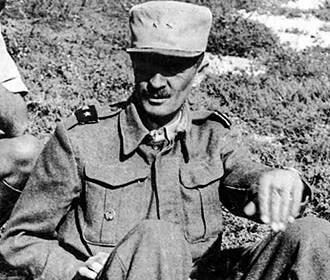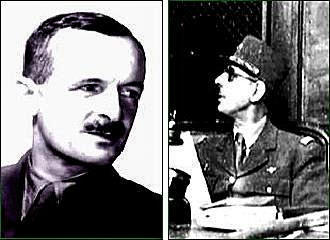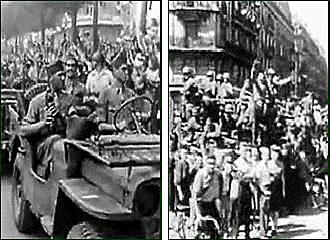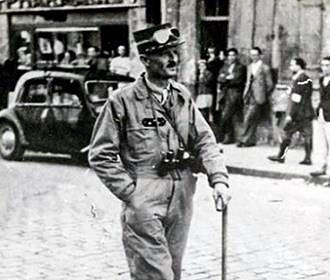Philippe Leclerc de Hauteclocque
Philippe de Hauteclocque was the fifth child born to a noble family from the Picardie region in France who was born in November of 1902 and was destined for an incredible military career after graduating from the Saint-Cyr Military Academy and choosing to join the cavalry.
He married Therese de Gargan in 1925 and worked on the General staff and as a military instructor, then became a top student at the Ecole de Guerre Military Academy, continuing his military career.
The start of World War II
During the Campaign in France he was captured, yet escaped and returned to the Front in the June of 1940, but Philippe de Hauteclocque was wounded shortly afterwards, yet because the German troops were advancing he left hospital early and proceeded to Paris on a bicycle where he met up with his Wife.
Always supporting her husband, Therese agreed to Philippe joining General de Gaulle in London, and he adopted the Pseudonym of Leclerc in order to protect her and his family from the invading forces, and in July 1940 General de Gaulle made him a commander alongside two others in order to rally French Equatorial Africa into the Free France cause.
Philippe Leclerc managed to rally support in Cameroon and remained there in charge for several months, at which time he had promoted himself to the rank of Colonel, and then General de Gaulle appointed him the Military Commander of Chad, so that he could prepare operations against Italian Libya.
He managed to take control of Koufra located within the south east of Libya in March 1941 and Philippe Leclerc swore to keep fighting until Strasbourg within the Alsace region was liberated.
Then following a successful campaign at Fezzan, Philippe Leclerc took part in another campaign during the early part of 1943 serving under General Montgomery, who was the head of the British 8th Army.
Philippe Leclerc and the Liberation of Paris
General de Gaulle placed Philippe Leclerc de Hauteclocque in charge of setting up the 2nd Armoured Division in the August of 1943, which was a unit trained and equipped by the Americans, and in Morocco, Philippe Leclerc succeeded in amalgamating the initial Free French core with Africa army units that had escaped from France via Spain along with Spanish volunteers.
So, at the end of 1943, General de Gaulle declared that the 2nd Armoured Division had been chosen to liberate Paris, which meant that it was transferred to England in the April of 1944 to complete training and they landed in Normandy at the start of following August.
An order was then given to march on to Paris and General Philippe Leclerc set up his command post in the Montmartre area of Paris, and by the end of August he had managed to secure a surrender from Von Choltitz, who was the German Commander for Paris at the time.
You may also remember reading earlier that Philippe Leclerc de Hauteclocque vowed to continue his duties and military career until Strasbourg was liberated and this promise was fulfilled by the 2nd Armoured Division in November 1944.
Then the men of General Leclerc managed to seize the Eagle Nest of Hitler located in Bavaria, just a few days before Armistice Day on 8th May, and by the June of 1945 he handed over his division to Colonal Dio, who was one of the first recruits of Philippe Leclerc back in 1940.
After World War II
General Leclerc became the head of the French Expeditionary Force for the Far East and he play a major role in re-establishing the French Sovereignty in Indo China, but with some misunderstandings, he was then appointed Inspector of Land, Sea and Air Forces in North Africa from July 1946.
He continued his military duties including meeting officials such as the Sultan of Morocco in the Spring of 1947, but unfortunately, he was involved in an air accident and died tragically on 28th November 1947.
Philippe Leclerc de Hauteclocque was given a state funeral, which was conducted at the Notre Dame Cathedral in Paris, and then he was buried alongside other National heroes at Les Invalides, which is where you can also find the Tomb of Napoleon Bonaparte I.
Also, a few years later by state decree, he was awarded the title of Field Marshal of France on 23rd August 1952 and as from 1994 there has been a museum in Paris dedicated to him, Jean Moulin and the Liberation of Paris called the Memorial du Marechal Leclerc de Hauteclocque.



